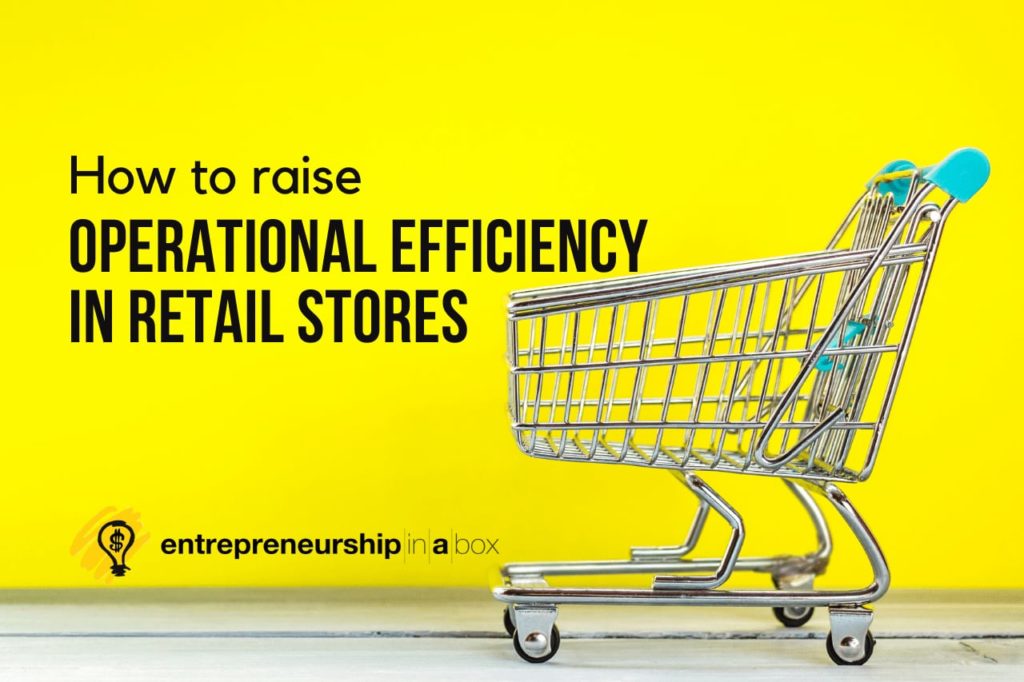Adopting new business processes might seem overwhelming, yet, the entire 2020 proved new challenges arise daily, and it’s every enterprise’s task to respond to them in an adequate and timely manner. But regardless of the events of this year, retail, just like any other business, is all about increasing sales and decreasing costs. So, operational efficiency is important for your success.
Efficient retail operations are essential to creating an input/output balance, i.e., minimizing inputs (people, time, and money) and maximizing outputs (customer experience, brand image, and sales).
With consumers being presented with various options for where to shop and what to buy, attracting, and keeping customers is growing difficult. Having this in mind, retailers need to identify the main difficulties, thus reduce risk, increase profit, and provide a great customer experience.
To help you with optimizing your store’s operational efficiency, we’ve outlined the crucial steps to take to boost your retail business.
Does My Retail Business Really Need Operational Efficiency Improvement?
A well-thought-out plan can go a long way in improving operational efficiency. Primarily, it enables retailers to cut costs yet boost profits, achieve positive ROI, and overall make smarter, data-driven business decisions.
Simultaneously, a straightforward agenda helps employees be more efficient and therefore improve customers’ experience. Also, your team becomes autonomous and is more prone to decision making. Ultimately, workers will generally feel more motivated in their work and perform it more thoroughly and effectively.
Last but not least, customer satisfaction will go sky high, as you and your teammates will be able to meet all customer expectations and create an enjoyable shopping ambiance.
Invaluable Tips on Raising Retail Operational Efficiency
Before discussing the major operational efficiency increasing methods, we have to lay the foundation and that is entering the right mindset.
Whether you’re an owner or a manager, your task is to be the leader of your team, both to tell and set an example with your work, strategies, and procedures.
Take a moment for an in-depth analysis of your retail store systems, question them, and identify inefficient tasks.
Now that you’ve diagnosed the soft spots, feel free to resort to the following methods of bettering your retail business.

Identify your KPIs (key performance indicators)
Now that you’ve decided you aim to improve retail operational systems, your task is to assess where to begin. Key performance indicators (KPIs) are metrics that can help you with that.
Your point of sale system (POS) holds data that can enable you to get a better understanding of your retail operations, including total sales, sales by store, best and worst selling items, conversion rate, inventory turnover rate, cost of goods sold, etc.
Once you set objectives in each of these domains and the KPIs that show your business’ performance associated with them, you will identify areas that need improvement or a change in strategy.
Automate
Prevent spending precious time and energy on dull, tiresome tasks and channel your and your team’s efforts on more important areas of retail operations. With many automation tools being built into your POS, it has never been easier to capitalize on those. Your point of sale system will enable you to manage expenses, timekeeping, payroll, invoices, and inventory.
Search for POS systems that provide these features and help you save time and avoid errors that can occur in your retail store’s daily tasks. Leave the time-consuming, repetitive tasks to the automated systems, and increase your operational efficiency and devote time to other spheres of your business.
Besides, implementing a technology-based solution provides flexibility, increase productivity, enable better, faster decision making, fraud detection, and lower operational costs.
Optimize inventory management
Another data-driven approach in optimizing your retail operations is managing inventory in retail operations. POS system can reveal which items are selling the most, and which items aren’t flying off the shelves.
Reducing or eliminating these products from your inventory will allow you to dedicate that shelf space to better-selling products. It can also provide you with the insight you need to move inventory, allow conducting regular inventory checks that will help you quickly uncover errors or missing goods.
Exploit Omnichannel
All of your sales channels should report in real-time, so as to help prevent stock-outs or overselling issues. Thus, you will be able to keep customers happy and more likely to leave good reviews after a positive shopping experience.
Moreover, keep selling items on the channels that are most effective for your products and brand, and reduce selling on the channels that are just not working for you.
Optimize Physical Store
Make your physical store more effective by allowing the data from your point of sale and other business systems to understand which items are selling best, which promotions are driving in-store traffic, what days and/or hours are your busiest, etc.

Enhance the layout of your warehouse
Ensure logistics and fulfillment teams are working quickly and efficiently by analyzing the layout of your warehouse. Place the best selling items near the packing station. Moreover, if any items are frequently sold together, put them next to each other in the warehouse.
The Takeaway
Increasing profit, making data-driven decisions, having happier employees, increased productivity and an improved customer experience are only some of the reasons to focus on store operational efficiency, not to mention that the survival of brick and mortar retail lies in its ability to equal other ways of shopping.
With the help of these tips, embark on your journey towards optimizing your retail operations for the ultimate business success.
Investing in new technology is a huge commitment, so retailers need to understand and consider the costs and implications before starting a retail technology initiative. In addition, you should thoroughly evaluate the different types of available technology to determine which will offer the greatest return on investment.
Retailers now have access to further resources and means than ever before to assist and encourage them to meet increasing consumer needs and remain competitive.





